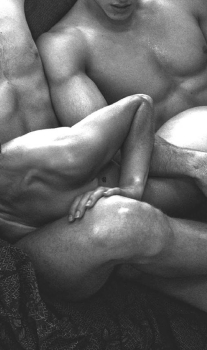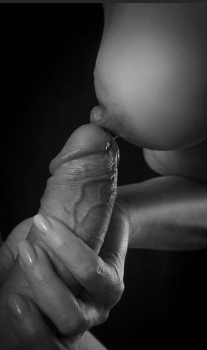What girls are really ready to do for a certain amount: myths and facts

What Girls Are Really Willing to Do for a Certain Amount: Myths and Facts
In the world of escorting, intimate encounters, and luxury leisure, legends often circulate that "money can buy everything." The internet and forums are flooded with myths: some claim that girls will agree to absolutely any fantasy, while others argue that there are no real limits. But reality, as shown by LuxeLive.Net — an international escort directory visited daily by hundreds of men worldwide — is much more mundane and much more interesting.
We decided to break down what girls are actually willing to offer for a certain amount, separate facts from myths, and show why honest and transparent communication is the key to a successful meeting.
Myths We Still Believe
The escort and intimate services world is surrounded by numerous myths. Let’s look at the most popular ones:
Myth #1: “Any girl will agree to anything for big money”
LuxeLive.Net’s reality shows that personal boundaries, comfort, and safety are always the top priorities for girls. Even for a very high fee, no one will do something that causes discomfort or danger. Money can grant access to exclusive scenarios and increased attention, but it does not override respect for the individual.
Myth #2: “Girls are willing to be intimate without consequences”
Some believe that escorting is completely “no strings attached.” In practice, every meeting is strictly regulated: rules of conduct, discussion of services, and clear agreements are the foundation of any successful encounter. LuxeLive.Net ensures transparency and safety for both parties.
Myth #3: “All girls are equally open to experiments”
In the LuxeLive.Net catalog, you’ll find girls with different interests, temperaments, and personal boundaries. Some specialize in classic escorting, others in erotic massage or private shows. Money can help fulfill fantasies, but girls’ interests and preferences remain personal choices.
What You Can Really Get for Money
Now for the facts. Let’s break down the services into categories for easier navigation:
1. Private Striptease and Erotic Shows
Many men assume that private striptease requires a huge fee. On LuxeLive.Net, prices vary depending on duration, the level of the girl, and location.
Approximate rates:
| Service | Starting Price | Duration |
|---|---|---|
| Private Striptease | €100–200 | 30 minutes |
| Erotic Show | €250–400 | 1 hour |
| Themed Show with Props | €400–700 | 1–1.5 hours |
Fact: Girls meticulously prepare for each performance, selecting music, costumes, and atmosphere to make the experience unforgettable. Money pays not just for the service, but also for professionalism and time.
2. Erotic Massage
Erotic massage is a distinct category, where a girl’s value is determined by technique, experience, and ambiance.
Approximate rates:
| Type of Massage | Starting Price | Duration |
|---|---|---|
| Relaxing | €150–250 | 30–45 minutes |
| Intimate | €250–450 | 1 hour |
| Scenario-based (Roleplay, Script) | €400–600 | 1–1.5 hours |
Fact: Girls can create personalized scenarios by agreement, making the service unique and exclusive.
3. Escort Companionship and Dates
Escorting is not just about intimacy. It’s the art of accompanying, conversing, and creating unforgettable evenings: dinners, events, travel.
Approximate rates:
| Type of Escort | Starting Price | Duration |
|---|---|---|
| Evening Escort | €200–400 | 3–4 hours |
| Full-day Escort | €500–800 | 12–24 hours |
| Travel and VIP Escort | €1000+ | By agreement |
Fact: Girls choose whom to accompany and which scenarios they’re comfortable with. This ensures safety and high-quality service.
Why Real Boundaries Matter
Many clients think, “If you pay, boundaries can be ignored.” At LuxeLive.Net, it’s understood that respecting personal boundaries isn’t just ethics — it’s a tool for quality service. Girls appreciate clients who negotiate honestly and openly.
Transparency works both ways: you immediately see who is willing to provide which services and who is not. This saves time, money, and stress.
Real Stories and Client Reviews
"I thought money could buy everything, but when I started communicating through LuxeLive.Net, I realized girls choose meetings on their own terms. It was honest and comfortable. The evening turned out amazing." — Artem, Moscow
"I booked an escort for travel. The price met my expectations, but the service exceeded them. The girl not only accompanied me but made the trip unforgettable." — Mikhail, Berlin
"The myth that you can 'get everything for money' disappeared instantly. Reality is much more interesting: girls’ boundaries create an atmosphere of trust and comfort." — Sergey, Paris
FAQ: Honest Talk About Money and Services
Q: Can you negotiate any fantasy for a high price?
A: No. Each girl sets her own boundaries. Money does not override comfort and safety.
Q: How much do exclusive scenarios really cost?
A: The price depends on scenario complexity, the girl’s experience, and time. LuxeLive.Net provides transparent pricing.
Q: How can I tell if a girl agrees to the chosen services?
A: Every profile on LuxeLive.Net details services, interests, and limits. Pre-meeting communication is key to a successful and safe experience.
Q: What if misunderstandings arise during the meeting?
A: Any situation is resolved through open dialogue. Girls appreciate clients who discuss and respect boundaries.
Conclusion
The world of escort and intimate services is not “everything for money.” It’s an art of balancing desires and boundaries, creating comfort and passion. LuxeLive.Net makes this possible: transparent prices, real profiles, safe meetings, and attentive girls.
Reality is always more interesting than myths. Girls are ready to give emotions, unique experiences, and pleasure for money, but their choices, boundaries, and safety remain a priority. This is what makes a meeting truly luxurious and unforgettable.
Text author: Sofya, your guide to passion, escort, and love.









